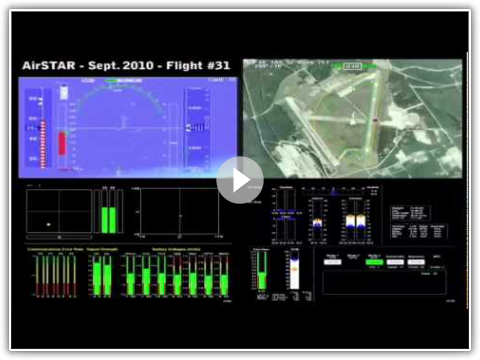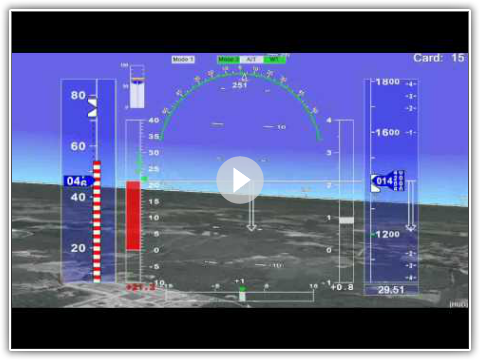March ’10 Deployment: “L1 flew on the GTM!”
On Wednesday, March 24, 2010, in Fort Pickett, VA, an L1 flight control system flew on NASA’s AirSTAR GTM. “Flight 14” went on for approximately 16 minutes with the adaptive controller closing the inner-loop for about 14 minutes. During the flight, both the longitudinal and the lateral stability characteristics of the aircraft were simultaneously degraded from nominal to 100% (neutral stability). The last flight card also considered the case of simultaneous locked-in-place failure of the two left elevator segments. The adaptive controller was able to guarantee safe operation of the vehicle during the entire flight and the pilot was able to satisfactorily fly the specified pattern, consistently with the theoretical predictions.
June ’10 Deployment: “A well controllable aircraft during stall and post-stall flight”
Based on the performance and predictability of the L1 flight control law observed in the stability degradation tasks, the pilot had the confidence to take the GTM into post-stall flight during the June 2010 deployment. The L1 flight control system significantly improved pilot’s ability to fly the aircraft at high angles of attack and decreased his workload. Dan Murri, the AirSTAR GTM T2 research pilot, assessed that the L1 controller was providing “a well controllable aircraft during stall and post-stall flight”.
To date, the L1 flight control law is the only control law that has flown in the high angle-of-attack, post-stall regime on the GTM aircraft.
September ’10 Deployment: “L1 in support of unsteady aerodynamic modeling”
During the September 2010 deployment, the L1 flight control law was evaluated in a series of offset landing tasks. Moreover, the L1 adaptive flight control law was used in support of other research tasks to reduce the pilot’s workload and provide tighter acquisition of target flight conditions. One of the research tasks flown during the September 2010 deployment was the calibration of the two air-data vanes placed on each wingtip of the GTM aircraft. In addition, during this same deployment, the L1 flight control law was used to support unsteady aerodynamic modeling work at post-stall.
May ’11 Deployment: “L1 enables exploration of departure-prone edges of the flight envelope”
During the May 2011 deployment, the L1 adaptive control law continued to support nonlinear unsteady aerodynamic modeling beyond the linear flight regime, and also enabled exploration of departure-prone edges of the flight envelope. The L1 flight control system enabled operation near stall and departure for longer periods of time, which allowed collection of dynamic data for a wide range of flight conditions, including low angle of attack, moderate angle of attack, stall, departure, and recovery, with a single maneuver.

